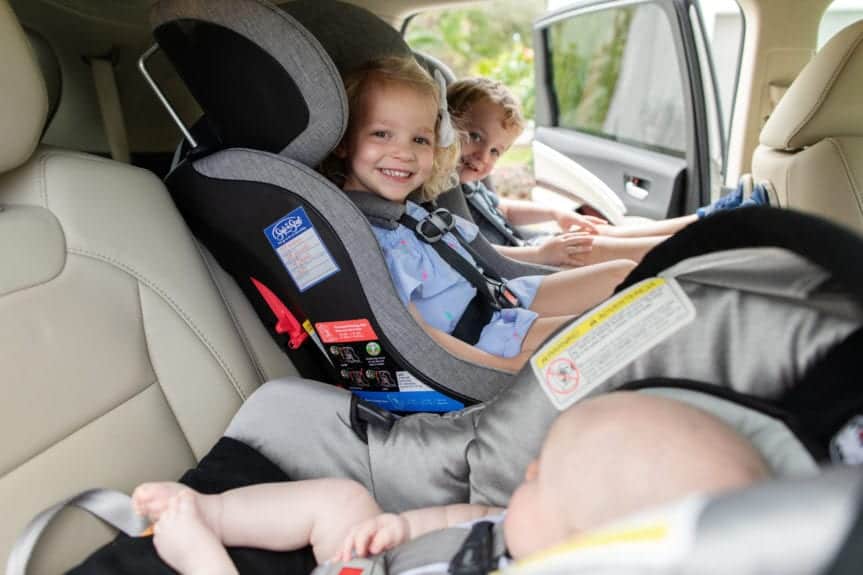Car Seat Safety: You’re probably doing it wrong. Admitting it is the first step.
Car Seat Safety: Parental Preference vs. Proven Science
Fact: There is no formula when it comes to parenting (as much as we wish there was one).
Also a fact: Being a parent makes you kind of a scientist. (Lofty life goal, check.)
You try new things every day, experimenting with different foods, toys, books and TV shows. But here’s the thing about car seat science—your preference doesn’t have a place in the car seat safety world. There is a massive difference between parental preference and proven science. There is one right way, and there are many very wrong ways.
For instance, 95% of parents think their child is properly restrained in the car. Fact: Less than 10% of those parents are actually correct.
I’ll say it again—car seat safety is science. Props to science for giving us one parenting formula. But while a formula exists, the variables are constantly changing. To truly be safe in the seat, you need a detailed review of your child, their specific car seat, your particular vehicle and the prowess of the installer and harnesser. What could go wrong?
Well, lots.
As a Nationally Certified Child Passenger Safety Technician, here are a few common, major issues I see almost daily:
Why do I need a car seat in the first place?
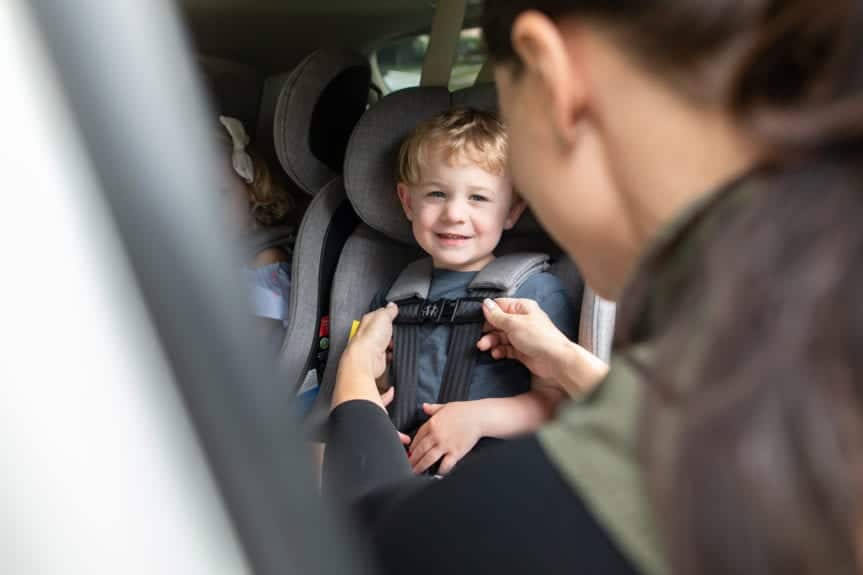
Driving is the deadliest thing we do with our kids. As the number of cars (and people) goes up, the number of accidents goes up, too. In 2016, there were nearly 35,000 police-reported fatal accidents across the United States. Plus, studies show that your personal lifetime odds of getting into a fatal accident are 103—as in more than one per year. That’s a huge deal.
Think you can hold the child in your lap? If the crash force alone can send an adult through a windshield, your littles are in even worse danger. Let’s check in with Newton’s first law of motion on this one: An object at rest stays at rest and an object in motion stays in motion with the same speed and in the same direction unless acted upon by an unbalanced force.
Basically, if we don’t want kiddos flying out of the car, we need to properly harness them in a safety mechanism that will act as an unbalanced force. Your arms around them in your lap are a balanced force: Though you are holding onto them, you’re going out that window, too.
A properly installed car seat is unmoving, evenly spreads the crash force over a child’s entire body (all force in one place = high impact; all force in many places = low impact), and will act as the strongest friction against the physics that wants to throw everyone from their seats. (P.S. This applies to any form of transportation, i.e. a plane.)
Related: Flying with Kids: Expert tips to keep your kids safe
Installing car seats and harnessing children improperly
There are only 100 ways this could go wrong. We can’t get into all 100 here (check out Safe in the Seat’s #MondayMisuse series on Instagram and Facebook), but here’s a bit of the science behind the rules.
Even the tiniest car seat safety regulations are put in place to protect our littles from major impact, serious injury and that scary D word: Death. From seatbelt manufacturers to vessel engineers (planes, trains, automobiles) to major vehicle safety organizations, the latest in car seat technology is constantly being tested to ensure our littles’ utmost safety in every vehicle.
Some common examples of misuse that have deadly consequences: Whether to tether, improper belt path designation and not installing your car seat tightly enough.
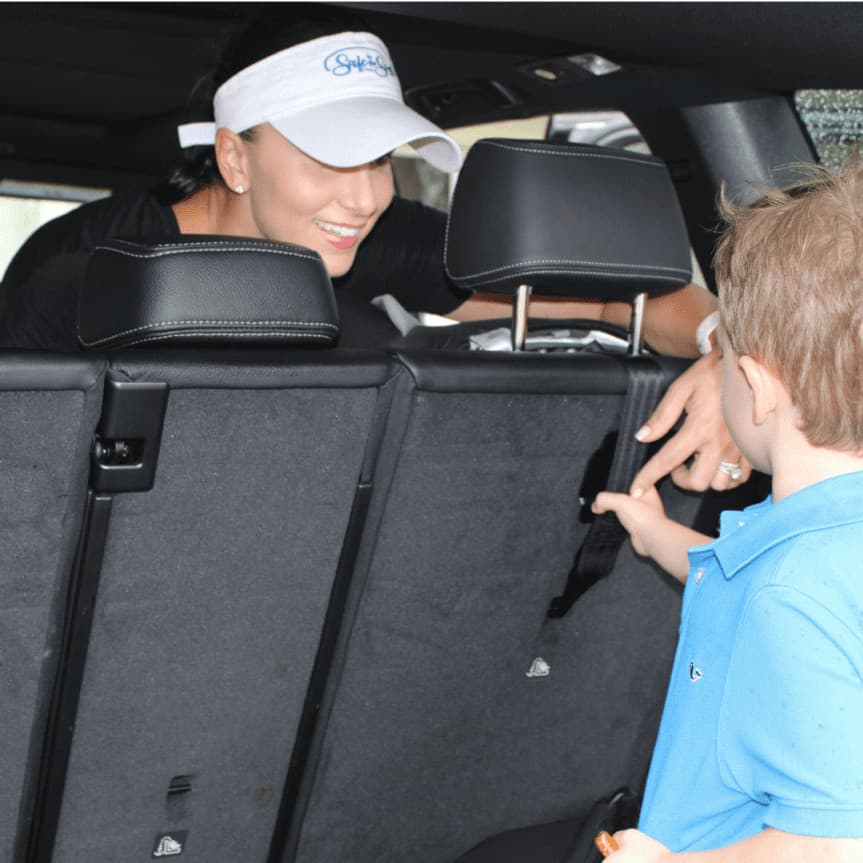
Wondering what that long, seat-belt-esque strap that extends backward from the top of your convertible car seat is for? That’s a tether. It’s intended to attach to a tether anchor typically located behind a vehicle’s rear seats. There are often lower anchors beneath our littles’ seats; shouldn’t those secure my children well enough? Well, not enough, and not using a tether can cause life-threatening effects.
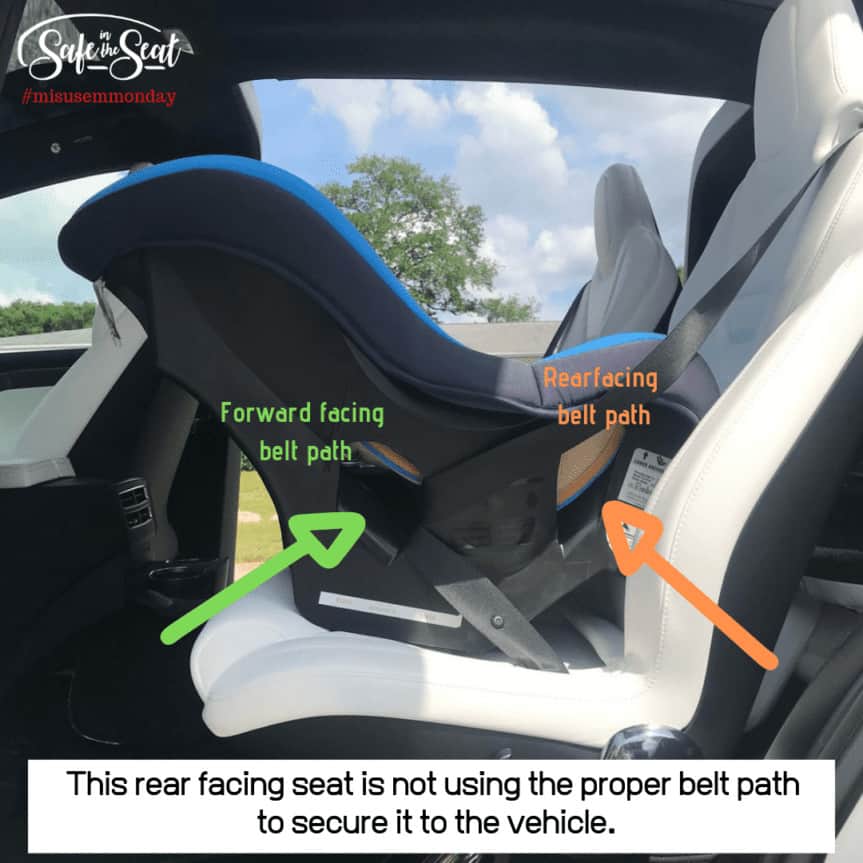
Our convertible seats often have two separate belt paths—one for rear-facing and another for forward-facing. This isn’t a pick-and-choose; the correct belt path to use is most often the one closest to the vehicle seat.
Many car seats are not installed tightly enough or are not harnessing properly. In fact, 69% of babies have a loose harness. Remember, the seat must be installed tightly so it stays in place, and a child must be harnessed properly so they stay in place, no matter the occasion. The less the seat can move, and the less our kiddos can noodle around in their seats, the safer they are.
Most importantly, always double check your manufacturer manuals for details specific to your vehicle and car seat. Having rules at all means they can change, and regulations tend to shift a bit between manufacturers.
“Graduating” children into the next car seat stage too early
“My child’s legs are hitting the seat! Finally, I get to switch to forward-facing!” You stop it right there. Children are meant to stay rear-facing for as long as possible, at least until they reach the height and weight limit of their seat (which can often get the average child to age 4 before they outgrow their rear-facing convertible seat).
Plus, most crashes are frontal impact, and that’s exactly what a rear-facing seat is made to best handle. For any naysayers left out there, no—your child’s legs are not at risk of breaking in this position. In an accident, bodies are propelled toward the front of the car. The legs go with them.
This goes for all future stages, too. Think your harnessed kids are ready for a booster? Can your five-year-old sit like a soldier for more than five minutes in any situation? (If so, send your parent manual ASAP.) From experience, most kiddos are objects in constant motion.
A five-point harness is a restraint. A booster seat uses a seat belt (not a restraint). The real question you should be asking yourself is do they need to be restrained? And don’t even get me started on children sitting without booster seats. Graduations are exciting—but remember why it’s called an adult seat belt. It’s designed to stop crash forces for an adult body. Get acquainted with the five steps below before making the big move.
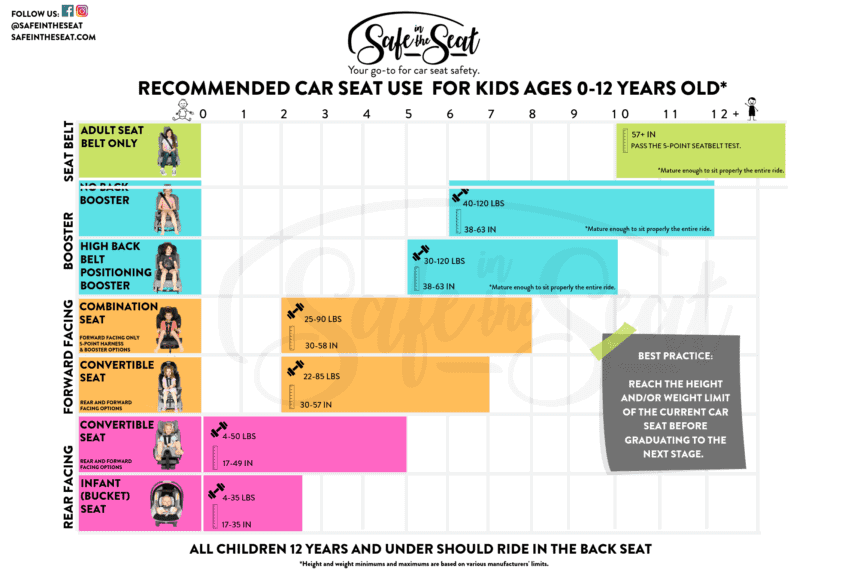
Moving kids to the front seat too soon
“But their friends are doing it!” It’s a quick trip to the grocery store. We live right around the block. It’s just this once. But it’s not worth it. Air bags are now designed to make travel even safer—for adults, not children. (Plus, if you’ve ever experienced an air bag, it is literally like getting thrown into a brick wall.)
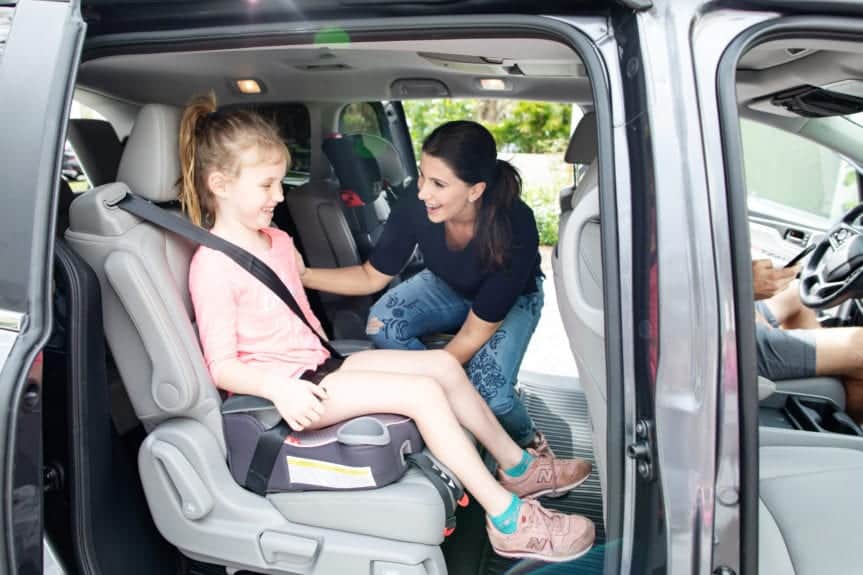
The back seat is always the safest place for our 0-12-year-old littles to ride. So, check off your kid’s thirteenth birthday present—congratulations! You now get to sit in the front seat because your bones and muscles have developed enough to handle getting slammed into that brick wall.
A car seat is likely the one item on your baby registry that could actually save your child’s life. Science tells us that we need a properly installed car seat and correctly harnessed child for every single ride—2 minutes or 2 hours—no question. And, after every Safe in the Seat family having at least one major misuse, it’s worth getting with an expert to make sure your littles are as safe as they can possibly be.
As for the “big kids,” we’ve got to buckle up, too. The number one way we teach our kids that buckling up is important is by doing it ourselves.
Originally published in the September 2019 issue of Tampa Bay Parenting Magazine by guest editor Michelle Pratt of Safe in the Seat.


